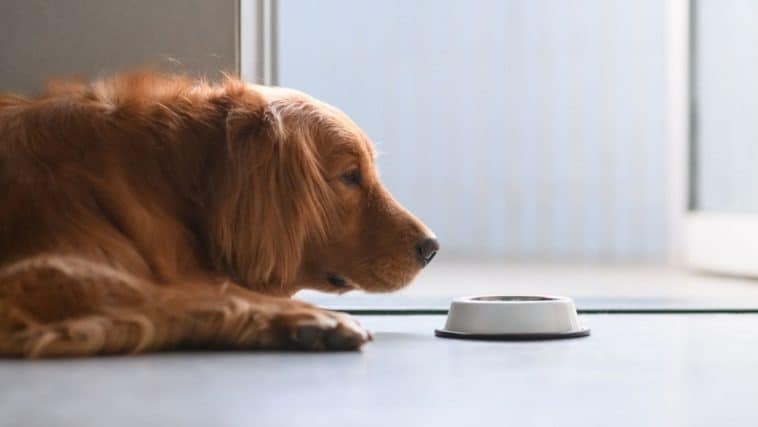Dogs can eat brown rice as they are omnivores. This means that, like most humans, their diet consists of both meat and plants. Brown rice is perfectly safe for your dog to eat and can be fed to them with no problems.
Table of Contents
How often can you feed your dog brown rice?
Many commercial dog foods will contain brown rice and other grains as a key ingredient. This helps to bulk out the food and provides them with some healthy fiber. If you are incorporating brown rice as a complementary food source then you should take care not to give them too much.
The right amount of rice to feed your dog will vary depending on their size. Larger dogs can handle up to ¼ cup of brown rice alongside their normal food. Smaller dogs should not be given more than a tablespoon a day.
The calories from rice should not make up more than 10% of your dog’s daily calorie requirements.
What are the health benefits of brown rice?
Brown rice is a great source of insoluble fiber. It has more fiber than white rice as it still contains the outer hull and bran. Fiber is important for the maintenance of a smooth and functioning digestive system.
Fiber will also help your dog to feel satiated for longer. This makes it a great addition to the diet of overweight dogs.
It can be a great tool to help support them through their weight loss journey. The fiber also helps the energy from the rice to be released slowly, preventing spikes in blood sugar levels.
It is a very easily digestible carbohydrate, which means it is a very good food to give to dogs experiencing GI (gastrointestinal) upset. It will help to soothe their stomachs and the nutrients contained within the rice can help to boost their recovery.
Brown rice is also high in vitamins B and D. These are essential for heart health. Vitamin D helps your dog to regulate the retention and balance of calcium and phosphorus in its body.
Calcium is required for the growth and maintenance of strong, healthy bones and teeth. It is also used to build and grow strong muscles (including the heart) and is required to keep the nervous system functioning correctly.
Iron is needed for the transportation of oxygen around the body via red blood cells. It is also needed for the function of certain enzymes in their bodies.
Riboflavin is one of the B vitamins found in brown rice, specifically vitamin B2. It helps to support healthy digestion and break down foods into energy. It also plays a vital role in the preparation and growth of DNA.
If there is insufficient riboflavin in their diet, you may notice injuries taking longer to heal.
Manganese is found in high proportions in brown rice. It is believed to help support healthy digestion and regulate energy levels.
Magnesium is used to relieve muscle tension. It can also support heart function and maintain energy levels.
Selenium helps to support healthy heart function and there is evidence to suggest that it reduces stress levels too.
There is also a decent protein concentration in brown rice. As the grain contains the outer hull, you will find more protein in this than in white rice. This is used to build and repair muscles.
Are there any dangers to feeding your dog brown rice?

You should always cook rice before giving it to your dog. This is because the rice grains contain something known as lectins, a protein that acts as an insecticide. This can cause their gut wall to become damaged.
Uncooked rice grains will begin to absorb moisture once they are in your dog’s stomach. This can lead to constipation, diarrhea, and bowel obstruction.
There are some rare cases where dogs have had an allergic reaction to brown rice. This often presents as ear infections, hair loss, and itchy skin. If you notice any of these symptoms then we advise contacting a veterinarian for further advice and assistance.
Brown rice is known to contain low levels of arsenic. This is a carcinogenic substance and can be dangerous if consumed in large quantities.
Brown rice is marginally higher in arsenic than white rice. While this is unlikely to be dangerous to your dog, it is something worth being aware of. We suggest limiting the amount of arsenic they ingest as far as possible.
How should you feed your dog brown rice?
When you first begin to incorporate brown rice into your dog’s diet, you should do it gradually. This will prevent their systems from becoming overwhelmed and minimizes the chances of a negative reaction.
You should never season rice that you intend to feed to your dog. Their bodies are not built to handle salt and pepper and it can cause stomach upset. It is also wise to steer clear of additional fats such as butter, ghee, or oil.
These add extra calories to the rice and are completely unnecessary to use.
If your dog has an upset stomach then it is often advised to feed them brown rice. For the initial 24 hour period following a bout of vomiting or diarrhea, you should fast your dog.
This does not apply to dogs under the age of 4 months, as they should not be left for more than 6 hours without food.
You should make a mixture of half brown rice and half cooked lean meat and feed this to them. This is a good food source but is not a complete source of nutrition. This combination should only be fed to your dog for a couple of days at most before you return to their normal diet.
You should slowly begin to reincorporate normal dog food into their diet after this time. Gradually increase the amount you are feeding them until you have returned to their normal diet.
If your dog does not begin to show signs of improvement or begins to deteriorate further, we recommend taking them to a veterinarian immediately.

